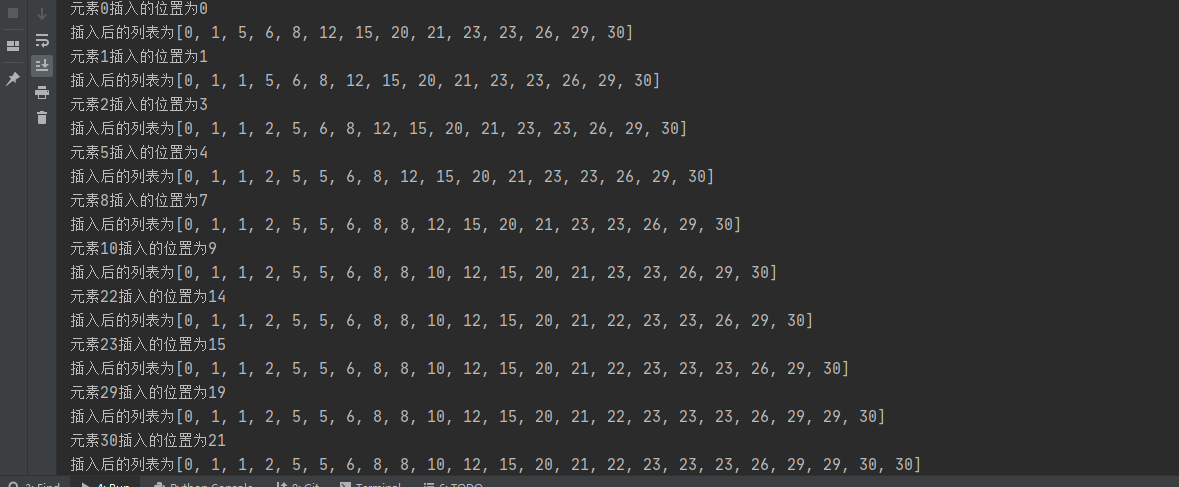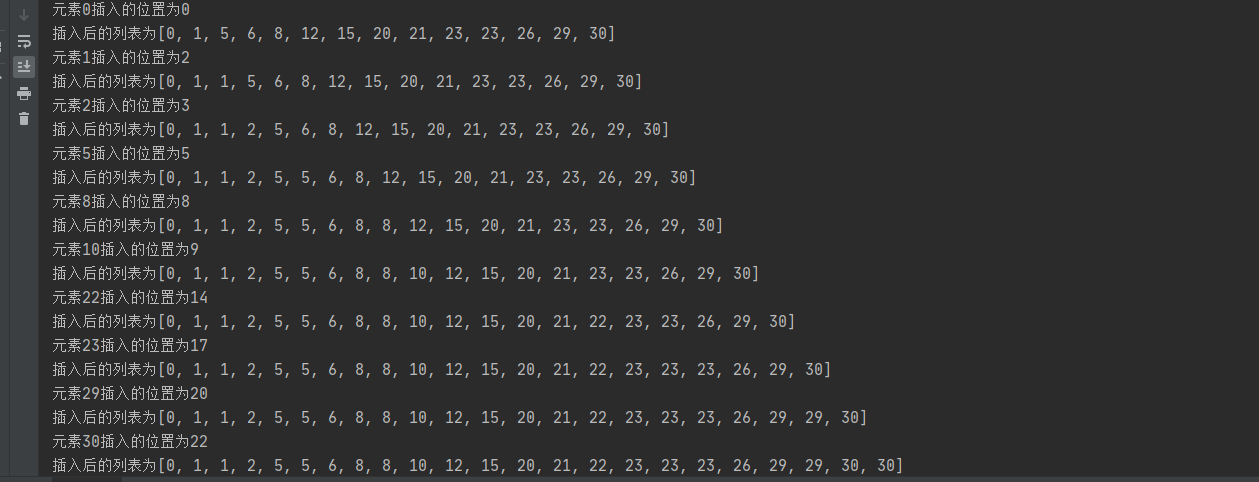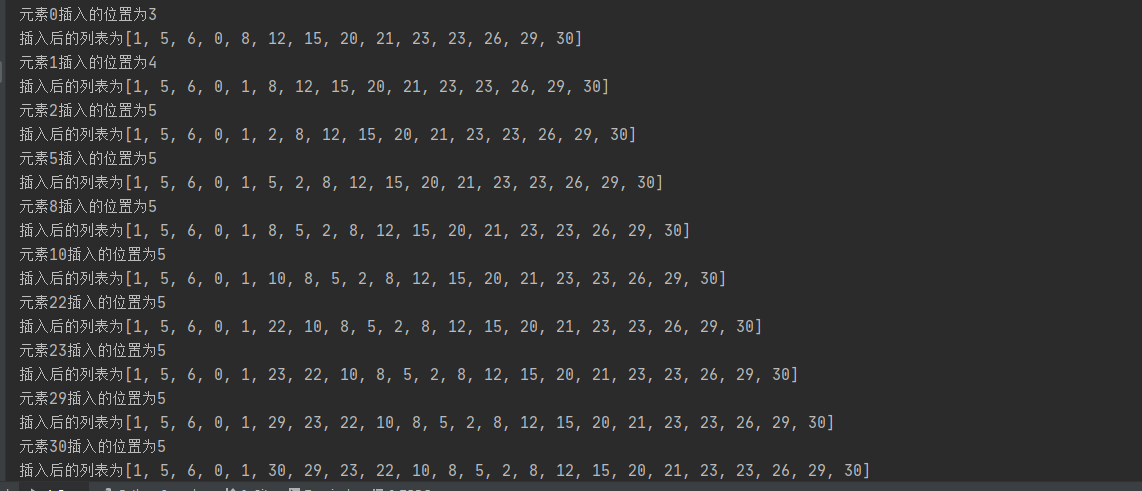bisect模块提供的功能:
一共包含四个函数
insort_right(a, x, lo=0, hi=None)
bisect_right(a, x, lo=0, hi=None)
insort_left(a, x, lo=0, hi=None)
bisect_left(a, x, lo=0, hi=None)
insort_right函数:a是升序排列的,将x插入a后,仍然保持a升序排列;如果x已经存在于a中,则将x插入已经存在的值的右边
insort_left函数:a是升序排列的,将x插入a后,仍然保持a升序排列;如果x已经存在于a中,则将x插入已经存在的值的左边
bisect_right函数:a是升序排列的,返回x插入的索引值,满足插入x后,a仍是升序排列;当x已经存在于a中,返回的是已经存在的x右边的索引值
bisect_left函数:a是升序排列的,返回x插入的索引值,满足插入x后,a仍是升序排列;当x已经存在于a中,返回的是已经存在的x左边的索引值
其中可选参数lo默认为0,hi默认为列表长度值,限定搜索的范围
上述情况的演示代码:
import bisect
haystack = [1,5,6,8,12,15,20,21,23,23,26,29,30]
needles = [0,1,2,5,8,10,22,23,29,30,31]
for needle in needles:
positon = bisect.bisect_left(haystack,needle)
print("元素{}插入的位置为{}".format(needle,positon))
bisect.insort_left(haystack,needle)
print("插入后的列表为{}".format(haystack))

for needle in needles:
positon = bisect.bisect(haystack,needle)
print("元素{}插入的位置为{}".format(needle,positon))
bisect.insort(haystack,needle)
print("插入后的列表为{}".format(haystack))

for needle in needles:
positon = bisect.bisect_left(haystack,needle,lo=3,hi=5)
print("元素{}插入的位置为{}".format(needle,positon))
bisect.insort_left(haystack,needle,lo=3,hi=5)
print("插入后的列表为{}".format(haystack))
